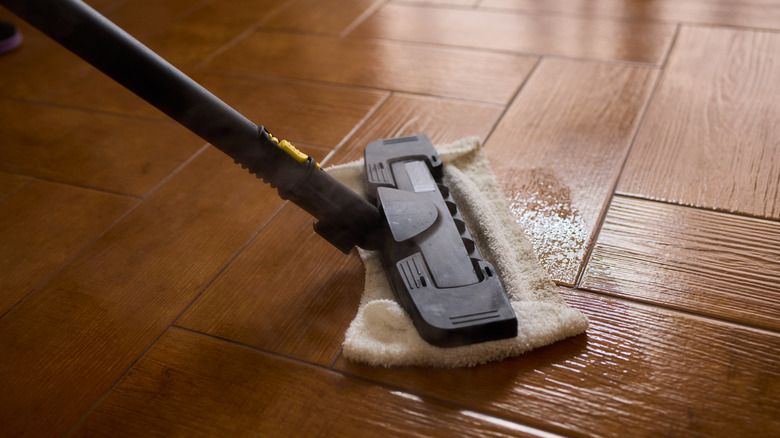Avoid One Popular Hardwood Floor Cleaning Technique If You Prefer Them To Last
Hardwood floors will always be the right choice for a home. They offer so many benefits, which include but aren't limited to — durability, aesthetic appeal, and being easy to maintain and keep clean. However, there is a big mistake to avoid making when taking care of hardwood floors, and that's using a steam mop.
Steam mops are a popular cleaning tool that use steam to deep clean floors. They are generally known for being a more effective cleaning technique than cleaning with regular water and soap, as the introduction of heat helps lift stubborn marks and stains. But if your home has hardwood floors, you'll want to look into an alternative approach. Using a steam mop can warp and damage the structural integrity of your hardwood floor, leaving you with the only option of lifting it up and replacing it. The cost of replacing a hardwood floor isn't cheap, so you're going to want to make sure it lasts by looking after it as best as you possibly can.
Why does a steam mop damage hardwood floors?
The mixture of heat and water that a steam mop uses to clean floors is what can damage hardwood. The moisture from the steam seeps into the wood and causes it to swell and warp, while the heat removes the floor's finish — making it even more prone to water damage. But, is this the same for all types of hardwood floors? Unfortunately, yes. Due to hardwood being a natural material, all species are susceptible to water damage and shouldn't be cleaned using a steam mop, especially floors that are unsealed — this even goes for engineered wood floors.
You may be thinking, if you can't use a steam mop, then what is the easiest and most effective way to clean a hardwood floor? It's all about regular upkeep. Try to sweep and vacuum your hardwood floors at least once a week to remove debris which can scratch floors. However, if you're insistent on using some kind of moisture, then use a spray mop instead. This means you can control how much solution you are dispersing out onto your hardwood floor. It can then be immediately dried up using a microfiber cloth and will prevent the chance of any water damage.

